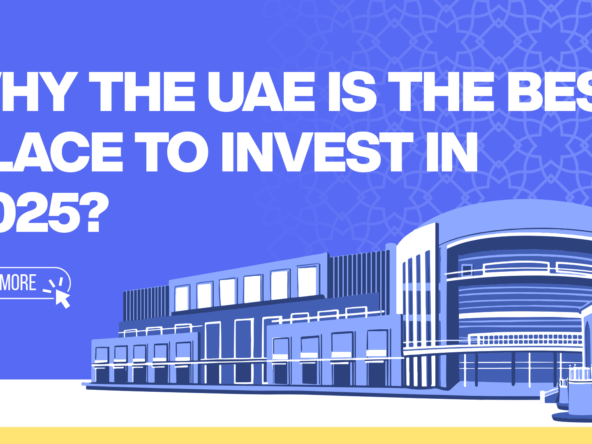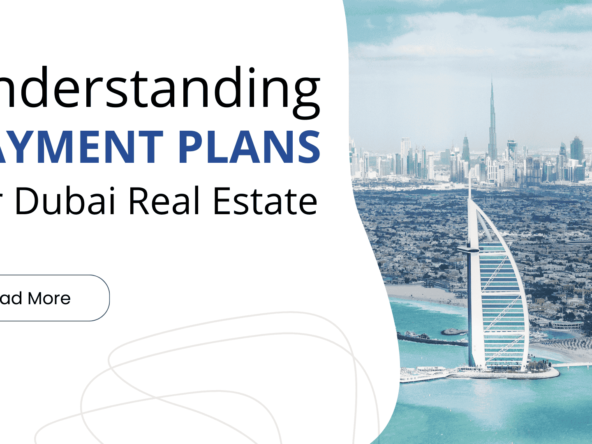LEED certification, which stands for Leadership in Energy and Environmental Design, is a globally recognized green building certification system developed by the U.S. Green Building Council (USGBC). It is accepted worldwide as a benchmark for sustainable and environmentally responsible construction.
LEED certification is awarded to buildings that demonstrate a commitment to environmental sustainability and reduced pollution. The certification evaluates a building’s performance in four key areas
- Energy efficiency
- Water usage
- Material sustainability
- Indoor air quality
Buildings earn points based on how well they perform in these categories. Based on the total points achieved, they are awarded one of four LEED certification levels:
- Certified
- Silver
- Gold
- Platinum
Projects are awarded LEED status based on points earned, leading to one of four possible certifications:
- Certified (40–49)
- Silver (50–59)
- Gold (60–79)
- Platinum (80 and above)
This system encourages developers and property owners to adopt greener practices and build healthier, more sustainable environments.
The UAE is setting a new benchmark in green building, and the future of sustainable construction in Dubai looks especially promising. Despite being surrounded by desert, the country has integrated green practices into its infrastructure, from transportation systems to environmentally friendly buildings.
Under the LEED (Leadership in Energy and Environmental Design) certification program, the UAE has 1,354 projects registered or in progress, as of recent reports. In 2021, the UAE ranked among the top 10 countries globally for the number of LEED-certified buildings.
Notably, Dubai earned the 3rd spot worldwide among cities for LEED-certified projects in 2021, according to the official report, highlighting the emirate’s commitment to sustainable urban development.
Development in Dubai is progressing at a rapid pace, and the LEED certification process continues to advance alongside it. In 2020, Expo City achieved an impressive LEED score of 121 in the categories of development and sustainability, highlighting its strong commitment to green building standards.
Expo City is home to numerous buildings that have received LEED certification. In total, it has achieved 103 LEED Gold, 9 LEED Silver, and 2 LEED Certified-rated developments. These rankings highlight Expo City’s strong commitment to sustainability and environmentally friendly development.
LEED certification is globally recognized and promotes the creation of greener, healthier spaces that do not harm the environment. Originally launched in the 1990s by the U.S. Green Building Council (USGBC), LEED is now managed by the Green Building Certification Institute (GBCI).
LEED evaluates and certifies buildings based on the following key criteria:
- Enhanced energy and water efficiency over the building’s lifetime
- Reduced operational costs and environmental footprint
- Constructed using sustainable, environmentally friendly materials
- Minimized ecological disruption during construction
- Improved indoor air quality and healthier living environments
- Stronger connection with surrounding communities, supporting sustainable urban growth.
Greenhouse gas levels in the environment have reached around 40–50%, making it essential to construct buildings that help reduce this impact. Buildings should be designed to minimize their carbon footprint and contribute positively to the environment. A LEED Gold certification serves as a strong indicator and assurance of a building’s commitment to sustainability and environmental responsibility.
The current LEED rating system, version 4.1, was released in 2019 and represents a significant advancement in green building standards. Under this system, all certified buildings are considered part of a green building project. The certification focuses on key environmental aspects such as reduced energy consumption, efficient water use, significant reductions in CO₂ emissions, and continuous performance monitoring once the building is operational.
The LEED certification system, based on key factors like energy efficiency, provides a clear pathway and guidance toward creating a greener, more sustainable world.
LEED certification is not only for newly constructed buildings but also for existing ones. The LEED certification for operation and maintenance assists facility managers by providing them with a blueprint to follow. By focusing on key points like efficient energy management and consumption reduction, this certification helps managers achieve their goals more quickly.
To understand how LEED-certified buildings impact the built environment and the challenges involved in obtaining certification. Some insights on the benefits and obstacles faced by both developers.
1. What makes adopting sustainability difficult, and how can it become second nature?
Sustainability is now being applied across all sectors, especially in the building sector. According to a 2021 report, the built environment accounts for nearly 50% of global CO₂ emissions annually. Of this, buildings contribute 27% of the emissions each year, with construction materials alone accounting for 20%. The benefits of green buildings are widely acknowledged, as they do not harm the environment; instead, they protect it effectively while also promoting better health.
While the benefits of green buildings are clear, it’s important not to overlook some of the associated challenges:
Cost Considerations:
Choosing eco-friendly materials and fixtures often results in higher upfront costs, affecting overall investment.
Resistance to Change:
Developers, facility managers, and tenants may resist adopting new sustainable practices, making widespread commitment essential.
Lack of Awareness:
Many builders may not fully understand the steps required for sustainable construction, causing delays or missed opportunities.
To overcome these challenges, sustainability must become a habit. Small, consistent efforts by individuals and proactive measures by developers are key to making lasting, positive change.
2. What are the critical aspects to focus on when managing a LEED-certified building?
Managing a LEED-certified building requires a strong understanding of its long-term sustainability goals. The LEED framework emphasizes minimizing environmental impact throughout the building’s lifecycle. Facility managers must be well-informed about the building’s structure, systems, and overall performance, particularly in areas like energy efficiency and resource usage.
Key responsibilities include identifying areas needing improvement, maintaining system efficiency, and ensuring timely repairs. Additionally, educating tenants about responsible practices, such as turning off lights and water when not in use, is essential to maintain the building’s green standards and optimize energy use.
3. Can you give two examples showing how managing a LEED-certified building differs from a non-certified one?
- Qualified Management: LEED-certified buildings must be managed by professionals who are well-versed in LEED standards. These managers understand the specific requirements and sustainability goals that come with certification, unlike in non-certified buildings, where such expertise may not be essential.
- Ongoing Compliance and Reporting: LEED buildings require continuous documentation and performance monitoring. Facility managers must follow a strict checklist to ensure the building maintains compliance with LEED criteria over time. In contrast, non-certified buildings typically do not have such rigorous reporting obligations.
4. Do LEED certifications benefit facility managers? In what ways?
Yes, LEED certifications offer several benefits to facility managers. Holding a LEED credential demonstrates expertise in sustainable building practices, which builds trust and credibility with clients. It also provides global recognition, expands their professional network within the green building industry, increases job opportunities, and often leads to better salary prospects.
5. How do facility management teams influence building operations to achieve LEED certification?
With growing energy efficiency goals, the role of facility management (FM) teams has expanded beyond routine maintenance. They are now instrumental in ensuring tenant safety and implementing sustainable practices in daily operations. By managing energy use, optimizing systems, and driving environmentally responsible decisions, FM teams significantly contribute to achieving and maintaining LEED certification.
What is the application process for LEED certification?
- Enrollment
- Documentation Submission
- Assessment
- Award of Certification
Enrollment
Before registering for LEED certification, you must ensure your building meets several essential criteria, such as:
- Regulatory Compliance
- Minimum Floor Area Requirement
- Defined Site Boundary
- Permanent Structure
- Minimum Occupancy Levels
- Energy and Water Data Reporting
- Building-to-Site Area Ratio Requirement
Next, determine the appropriate LEED rating system that aligns with your project.
Documentation Submission
Collect the necessary documents for your project, choose the credits to pursue, and analyze building performance data. Ensure all documents are clearly labelled and submit only the required ones. Don’t forget to pay the application fee.
Assessment
After submission, your application will undergo multiple review stages, in which your involvement will be required. This process includes an initial review, an optional final review, and a possible appeals or supplemental review.
Award of Certification
After the reviews are finalized, you will receive your final report and certification outcome.
What is the least number of points needed to achieve LEED certification?
- Certified: 40-49 points
- Silver: 50-59 points
- Gold: 60-79 points
- Platinum: 80+
Therefore, the minimum requirement for the most basic level is 40 points.
How to boost your LEED certification score?
There are a lot of ways to increase and get a good score for your project.
- Select Credits Strategically:
In the LEED scoring system, there are nine types of credit categories, but not all credits carry equal weight. To maximize your score, focus on high-impact areas such as building design and sustainability strategies. It’s essential to ensure your team is aligned and working efficiently toward the most beneficial credits for your project.
- Opt for Suitable Materials for Your Project:
When selecting materials for your project, ensure they are environmentally friendly and safe for human health. Choose products that involve minimal use of harmful chemicals or petroleum during manufacturing and transportation. Prioritize materials that are recyclable or reusable, as these choices contribute positively to your LEED certification score.
Learn about Environmental Product Declarations (EPDS)
The system features almost 100 Environmental Product Declarations (EPDs) to ensure the transparency of construction materials. Understanding their usage and benefits can help you gain points towards achieving a higher certification score.
LEED certification is at the forefront of green building, covering new construction, renovations, landscaping, and neighbourhood development. At RTS, our waste management experts provide sustainable and cost-effective strategies to help businesses and communities manage waste more efficiently, boosting overall sustainability.
Which locations in Dubai feature LEED-certified buildings?
You can find LEED-certified properties in several areas across Dubai that prioritize sustainability and green building practices. One such prominent location is The Valley, which offers eco-friendly developments designed with energy efficiency, reduced environmental impact and enhanced livability in mind. These buildings meet LEED standards by incorporating sustainable materials, efficient water and energy systems, and improved indoor environmental quality, making The Valley a prime destination for environmentally conscious residents and investors.



